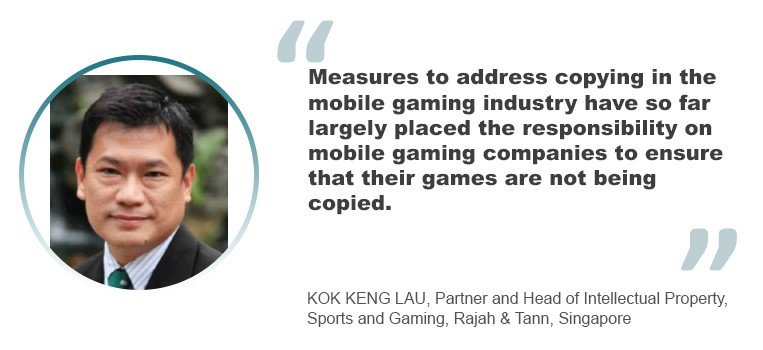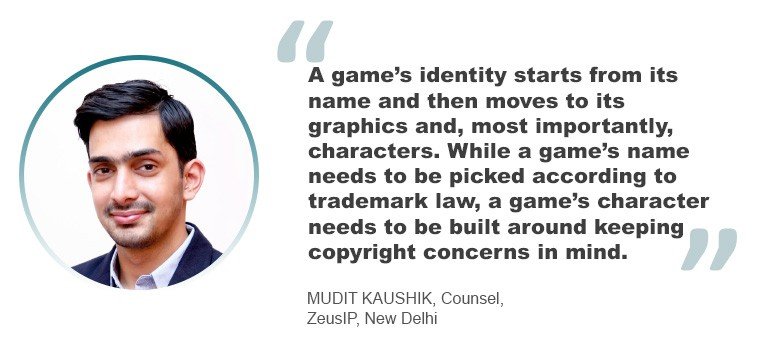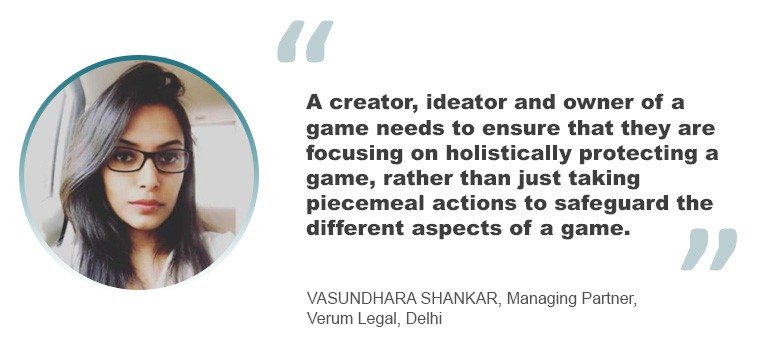Gaming was already on the rise, but the pandemic sent the industry into overdrive. IP lawyers in China and India share how they’re coping with laws that haven’t always kept up with technology.
Traditionally, gaming companies have built their games from the ground up, creating the material, the codes and the engines that allow the games to run and function. But a growing number of gaming companies are abandoning this model in favour of partnering with international studios. This partnership has led to mobile game companies gaining the rights to develop mobile versions of their international studio partners’ famous games.
This has resulted in the generation of sizable fan bases from the moment the game gets published. In turn, this increases brand recognition of popular titles and boosts the size of the market when there are new releases related to popular titles, and allows mobile gaming companies to produce games that remain relevant to gamers.
China and India have both embraced this new mobile gaming industry.
In 2011, Tencent, which is now the largest game publisher in the world, paid US$400 million for a 93 percent stake in Riot Games, the developer of League of Legends; four years later, it took full control over Riot Games. In 2012, Tencent invested US$330 million in Epic Games. In 2018, Tencent snatched up a majority stake in Grinding Gear Games. In fact, today there is a long list of companies in which Tencent has invested, including Ubisoft, Activision Blizzard, Supercell, Platinum Games, Yager, Frontier Developments, Kakao, Paradox Interactive, Fatshark, Funcom, Sharkmob and Discord.
“The mobile game industry around the world and in China is booming, but game developers face fierce competition,” says Mingming Yang, a partner, Wanhuida IP in Beijing. “By getting a license from widely known properties, a mobile game can attract high attention and obtain a huge number of downloads in the short term. Chinese game developers Tencent and NetEase are betting heavily to obtain the licenses of IP for fiction, comics, cartoons and movies in China and worldwide to develop mobile games like Tom and Jerry, Game of Thrones, Pokemon, Naruto and Dragon Ball.”
Game development in China
With the mix of films being adapted into mobile gaming and vice versa, developmental challenges are at hand. Yang says that IP owners may face challenges from the trademark squatters.
“Taking the live-action animation Monster Hunt as an example, it used to be the highest-grossing movie in Chinese film history, but the right owner faced difficulties developing and launching a mobile game because the name of the movie has already been registered by a competitor in terms of providing online games on computer networks,” he says. “In China, the name of a fiction or movie or the name of the main character cannot be protected under the copyright law, and the producer eventually got the trademark back by claiming the merchandizing interests.”
He says that another issue is that the names of some mobile games might not be able to be registered. For instance, NetEase developed an extremely popular strategy mobile game named Onmyoji that gained more than 200 million downloads worldwide and has been adapted into a movie, But NetEase encountered refusal when applying for registration of the trademark “Ying Yang Master,” which is equivalent to the Japanese term Onmyoji, because the examiner thought the trademark registration of this name may bring negative social impact.
“The registration of the aforesaid trademark was eventually obtained by NetEase in March 2019, nearly three years after the launch of the game, by submitting a batch of evidence showing that the name has acquired the secondary meaning through extensive use,” he says.
Another challenge for the Chinese gaming industry is the shortage of Chinese-created IP content with a booming market where consumers would be ready to spend more on new games.
“We can see a lot of long-lived games with steady storylines and characters creating large profits for their IPR owners, like Mario Bros. for Nintendo and Solid Snake for KONAMI,” says Fabio Giacopello, a partner at HFG Law & Intellectual Property in Shanghai. “And such IP is currently what the Chinese game industry is in great need of. We've seen some successful cases like Onmyoji developed by NetEase and Honkai Impact developed by Mihayo. Yet, it seems not enough. Getting foreign IP directly for Chinese gaming companys’ own use seems to be an efficient method to solve the problem for the time being.”
He adds: “It goes without saying that IP protection on the characters and their story is one of the most important elements. Chinese courts have long accepted the rule on the copyrightability on the general scenes, work of art and literary works. In the meantime, for certain elements, which they used to believe non-copyrightable based on idea/expression dichotomy, therefore, had to be granted protection based on anti-unfair competition law, the court started granting certain copyright protection for elements [which were] expressed enough.”
Game plagiarism is another developmental challenge. This used to cause trouble when people plagiarized the most important element in the game before developing a similar game with a different ‘skin’.
“In recent years, with the strengthening of IP protections and multiple jurisprudence from the Chinese courts, this issue has been largely solved,” says Fredrick Xie, an associate at HFG Law & Intellectual Property in Shanghai. “The gaming companies can protect their assets through trademark, copyright and anti-unfair competition.”
He adds that Chinese courts deemed that video games constitute a copyrighted work as a work created in a way similar to cinematography under the 2010 copyright law, and that courts would rule on similarity issues based on the similarity on the stories, characters, maps, scenes, weapons and monsters, among others.
“In the meantime, if the rule of the game is detailed enough so as to become ‘expression’, it is also copyrightable,” he says. “On the other side, we have certain elements where they don't constitute expression. Chinese courts would use the anti-unfair competition law to grant protection. Overall, plagiarism on a rule of the game originated by the developer, though with different characters and scenes – and therefore non-copyrightable – would still be an act of unfair competition.”
This is echoed by Kok Keng Lau, partner and head of intellectual property, sports and gaming, at Rajah & Tann in Singapore, who adds that game copying or cloning poses a significant challenge to developers in the mobile gaming industry.
“Developing a game has been made easier today with the advent of state-of-the-art technology,” he says. “There are many easy-to-use programmes and tools to develop games that are readily available on repositories such as Github and Ubuntu. The relative ease and low cost of developing mobile games have, on the other hand, also made it easier for a mobile game developer to copy elements of a game and pass it off as their own in order to generate revenue at the expense of the mobile gaming company that owns the IP to the mobile game that is copied.”
He adds: “Measures to address copying in the mobile gaming industry have so far largely placed the responsibility on mobile gaming companies to ensure that their games are not being copied. Apple’s App Store and Google Play both have reporting systems in place for application developers to report an application that they believe infringes on their IP rights.”
In solving these challenges, Lau says that mobile gaming companies should be proactive in developing an effective and robust IP strategy.
“They should consult IP lawyers with the relevant experience to help identify what IP in their games should be protected and to advise on the best and most cost-effective way to obtain such protection, to monitor any infringing activities and to take the appropriate enforcement action,” he says. “An integral part of a good IP enforcement strategy also needs to include the educational aspect – building awareness among the industry as to the importance of respecting IP.”
Finally, Lau says, the enforcement of IP should also take steps to ensure that fans of the mobile games are not alienated and continue to remain engaged positively. “It is common to see artwork, websites and videos based on the IP of popular mobile games made by fans to show their support for the game. On the other hand, there may be some who will exploit the IP of a mobile game to seek commercial gain for themselves by creating their own spin-off products and content. A balance ought to be struck between allowing fans to express their support by creating works that display, identify and discuss the mobile game, and preventing them from misusing the IP for commercial purposes.”
India’s booming industry
In India, the number of online game developers rose to around 300 in 2020 from a mere 25 in 2010. Because of a growing pool of talented IT engineers, India is becoming a popular backend development centre for gaming companies like Rockstar Games, Baazi Games and Paytm.
Given the high growth potential of the gaming industry in India, many foreign entities are exploring possibilities to set up operations in the country. Similar trends are reflected in many industry-related research reports which say that several global gaming firms have opened offices in India or have signed distribution agreements with leading Indian mobile game developers in order to distribute their products in India. While operating gaming businesses is easier in countries where gaming is legal, operators face challenges in India, where laws are more stringent. With the advent of social and casual games both offline and online, the gaming industry can now be said to comprise two verticals – gambling in both traditional and online forms, and skill-based social or casual gaming. However, under certain Indian laws, gambling activities are referred to as gaming.
Subhash Bhutoria, partner designate at L&L Partners in New Delhi, says that the developmental challenges that the gaming industry face include incorrect and incomplete or illegitimate contracts, the use of generic words as brands or trademarks, and third-party IPRs and proprietary data.
“Having appropriate service or developers’ contracts with the game developer can significantly reduce the challenges faced on account of incorrect or incomplete assignment of rights and their enforcement in India,” he explains. “White labelling of gaming software can also be a challenge in cases where the gaming company is not adequately permitted to enforce its rights against third party infringer. Incorrect, incomplete or inadequate assignments and licenses pose one of the major challenges for the gaming companies.”
There is another challenge in terms of branding. “Most gaming companies use generic terms such as rummy, poker, ludo (a strategy board game derived from the Indian game Pachisi) or cricket, prominently, as their brands or trademarks,” he says. “The companies should adopt and use distinctive brands and marks, and preferably conduct pre-conflict checks, before launching the game in India.”
In terms of third-party IPRs and proprietary data, “with the growth of fantasy sports and involvement of personalities and fictional characters in gaming, it is crucial to recognize and obtain permission to use third-party IPRs,” he says. “Often gaming companies use photographs, players’ names or other indicators such as a player’s jersey number or sound recordings in the gaming format or for promotion and advertising, which may violate the owner’s exclusive rights. Mobile games such as fantasy sports operate on actual players’ performance histories, goals, match scores and other such content, which may not be part of the traditional IPRs, but are protected as quasi-proprietary rights or as confidential information, in various jurisdictions. Use of such content without permission may pose a challenge to the gaming company using the content."
According to Mudit Kaushik, counsel at ZeusIP in New Delhi, archaic, lagging laws are also a challenge, since innovation and creativity do not always go hand in hand with the pace at which laws might evolve.
“The importance trademark law has garnered over the last decade or so can be clearly evidenced from recent developments,” he says. “A game’s identity starts from its name and then moves to its graphics and, most importantly, characters. While a game’s name needs to be picked according to trademark law, a game’s character needs to be built around keeping copyright concerns in mind.”
He adds: “Unfortunately, the scope of such protection under the copyright law for a character, graphical representation of a game or even its sound, story, etc. is quite unclear. With growing access and exposure of both brands and content, it is becoming increasingly difficult for creators of copyrightable content and proprietors of brand names to successfully and effectively protect their IP.”
With such challenges, Vasundhara Shankar, managing partner at Verum Legal in Delhi, says that a game must be protected in all aspects of IP rights – patent, copyright and trademark, alike.
“A creator, ideator and owner of a game needs to ensure that they are focusing on holistically protecting a game, rather than just taking piecemeal actions to safeguard the different aspects of a game,” she says. “Additionally, merely protecting the intellectual property of a game will not suffice unless the proprietor actively enforces it against third-party offenders. It may also not be incorrect to state that out-of-the-box ideas may be required to enforce rights. If the owner of a game has financial resources, it must have an internet investigation team which reviews games by third parties and especially direct competitors. Other game owners may consider outsourcing such activity to third-party vendors, which will be economical yet still yield effective results. Indeed, this is just an illustrative solution and other enforcement strategies can be devised based on the circumstances and resources in place.”
For Namrata Pahwa, IP and entertainment advocate at the Chambers of Namrata Pahwa in New Delhi, enforcing IP Rights in mobile gaming is about finding or collaborating on the right IP.
“When you’re searching for an IP to work with, you should always consider their audience,” she says. “It’s about what they want or would enjoy – that’s what’s going to attract more players. Thereafter we come to the most important part of enforcement – licensing. There is currently no industry standard relationship between studios and developers, so license terms can take many forms. Some studios might give developers free rein to produce any type of game they wish, while others carefully approve each project to ensure it matches the branded experience.”
While the U.S., China and South Korea still top the prize earnings charts in the esports arena, India is slowly finding its feet in the space. Already, the most popular global games are also finding favour there, such as the FIFA series of games, Counter Strike, Fortnight, Call of Duty, PUBG and Dota. The world of competitive video-gaming was already a billion-dollar industry in 2019. The pandemic, although not quite a black swan event, has transformed the fortunes of the gaming sector exponentially, generating interest in the sector from newer sources every day.
Pahwa adds: “How esports will get cemented in our lives is still uncertain. It may start in unexpected ways, perhaps with the collision of the worlds of traditional sports and esports: the International Olympic Committee has said that esports based on traditional sports such as football could be considered a sporting activity in future; and in early bids for the 2024 Olympics, the chair of the Los Angeles Olympics committee – which Paris eventually won; Los Angeles will host the 2028 Olympics – had even floated the idea of using augmented reality and virtual reality technology to make the global sporting event more accessible to younger audiences. All this essentially means that we must brace ourselves for the protection of new subject matter, and by corollary, new legal challenges as well. India is exploring this territory on the industry side; it is time for our courts to start preparing too.”
Excel V. Dyquiangco















